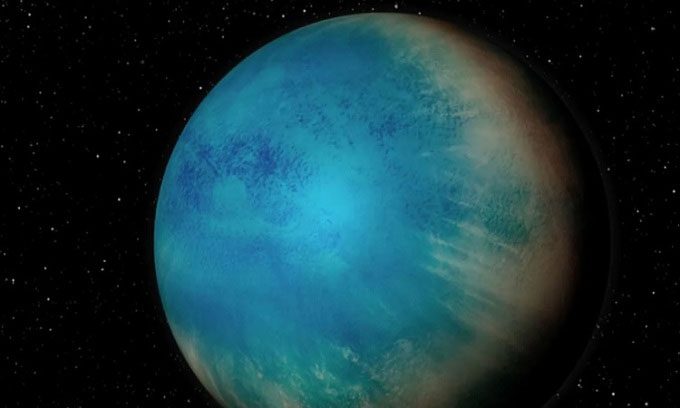Astronomers Discover a Planet Likely Covered in Water, 100 Light Years from Earth.

Artist’s impression of exoplanet TOI-1452 b. (Image: University of Montreal)
Exoplanet TOI-1452 b is located 100 light years away from Earth and orbits a star in a binary system within the Draco constellation. In a study published in the journal Astronomy on August 12, dozens of researchers from institutions around the world confirmed the existence of TOI-1452 b using the Transiting Exoplanet Survey Satellite (TESS), the Mont-Mégantic Observatory in Canada, and the MuSCAT3 telescope in Hawaii.
The newly discovered planet is believed to be 70% larger than Earth and nearly five times as massive. It orbits its host star every 11 days and is thought to have a temperate climate. The host star and its companion star revolve around each other at a distance 2.5 times greater than that between Earth and Pluto. There is evidence suggesting that TOI-1452 b is a water-covered planet, according to Charles Cadieux, a PhD candidate at the University of Montreal and the lead researcher of the study. Cadieux noted that the radius and mass of TOI-1452 b indicate that the planet has a significantly lower density compared to terrestrial planets like Earth, which are formed from metal and rock.
Analysis results reveal that water constitutes 30% of the planet’s mass, a ratio similar to some moons in the Solar System, such as Titan or Ganymede. To confirm whether TOI-1452 b is indeed water-covered, scientists still need to observe it using the powerful James Webb Space Telescope. TOI-1452 b is an ideal candidate for observation, being close enough to Earth for easy visibility and located in a region of the sky that the telescope can monitor year-round. The research team is working to schedule observations with the Webb telescope to explore TOI-1452 b as soon as possible.
Scientists can study exoplanets using telescopes through various methods, one popular technique being transit photometry. In this method, researchers examine the light emitted by the star to check for periodic dimming. If such dimming occurs, it indicates a planet may be passing between the star and the observer in a regular cycle. This method also provides clues about the planet’s mass and orbital period.
The first exoplanet was discovered in 1992. Since then, over 5,000 exoplanets have been confirmed as of March this year. According to data from NASA’s Kepler Space Telescope, it is estimated that there are over a trillion planets just within the Milky Way. Many of these planets are Earth-sized and could potentially lie within the habitable zone around their host stars. However, to date, researchers have not found evidence of extraterrestrial life.


















































